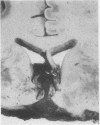Abstract
Six patients are described in whom cerebral damage was associated with raised plasma sodium and chloride concentrations and with extremely low urinary outputs of sodium and chloride. The patients were not clinically dehydrated and direct determinations showed that the blood and plasma volumes, the endogenous creatinine clearance, and the urinary output of antidiuretic hormone were normal. For these and other reasons it is concluded that the metabolic picture results not from diminished circulatory volume, water deficiency, sodium deficiency, undetected diabetes insipidus or osmotic diuresis, but from the cerebral damage itself.
In these and other cited cases, the cerebral damage was localized chiefly in the frontal lobes, hypothalamus or lower brain-stem, thus suggesting a descending pathway, the relationship of which to the pineal area controlling aldosterone secretion requires clarification.
Full text
PDF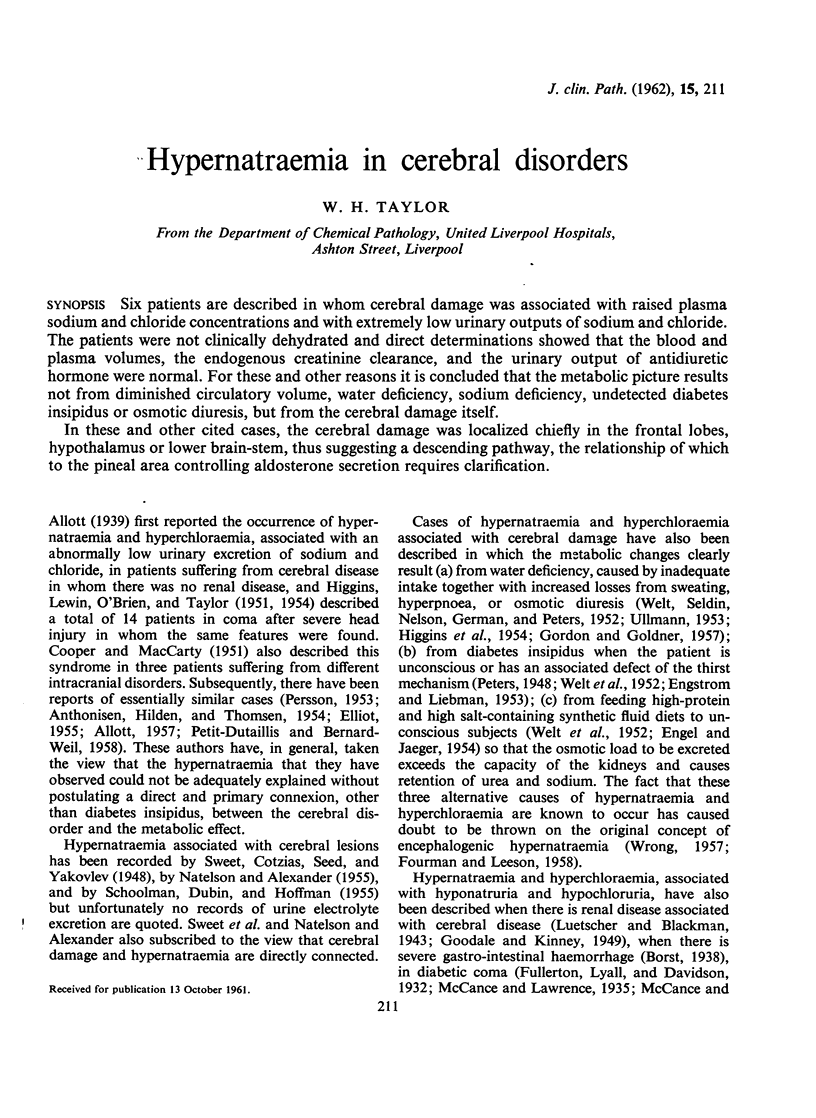
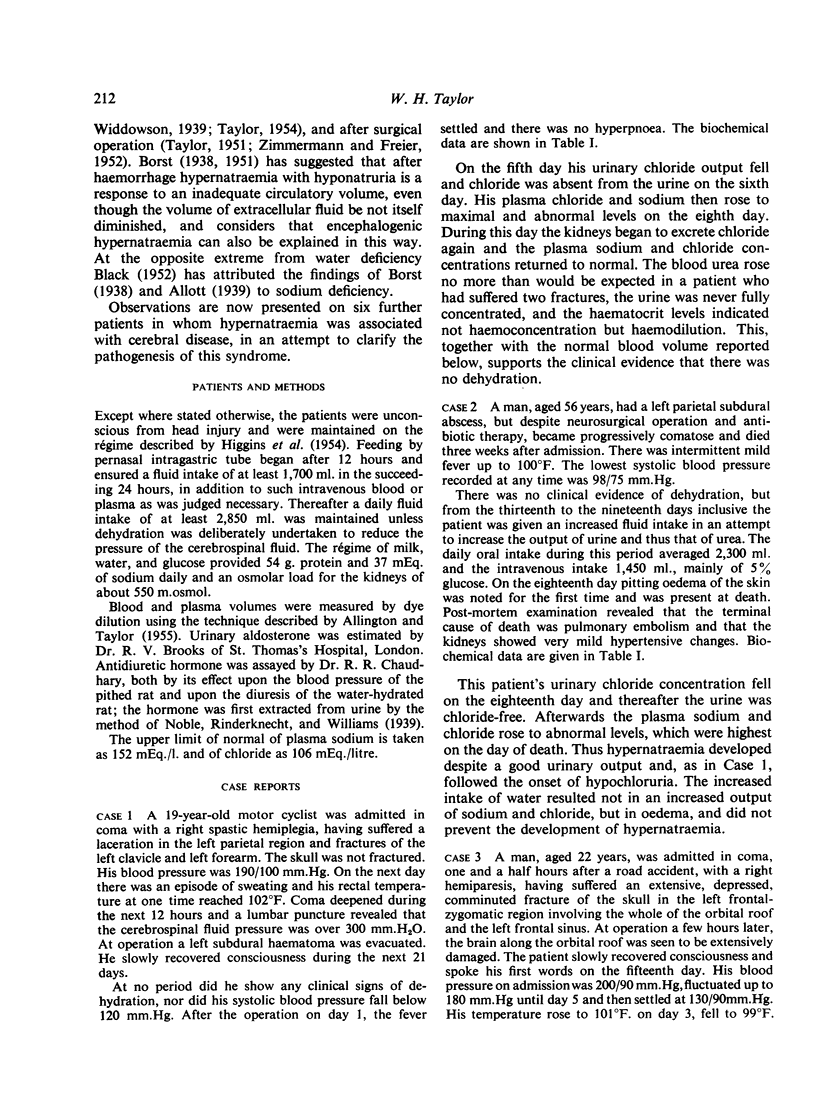
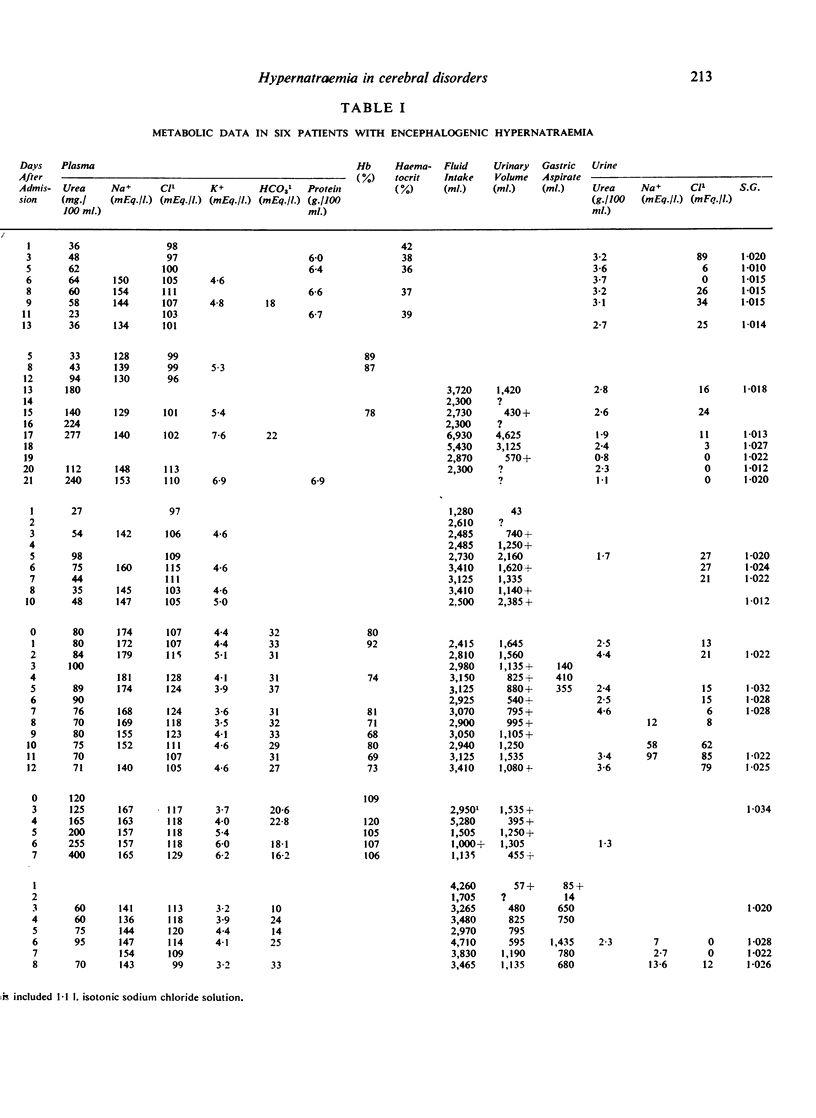
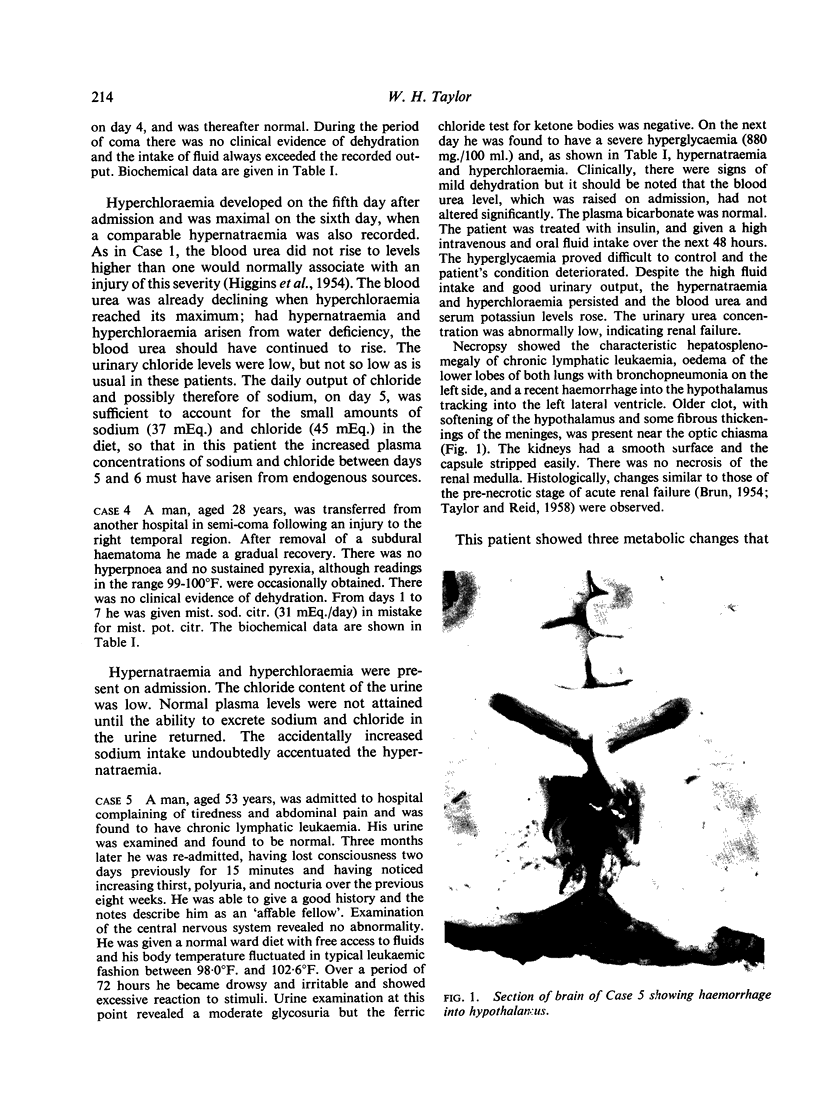
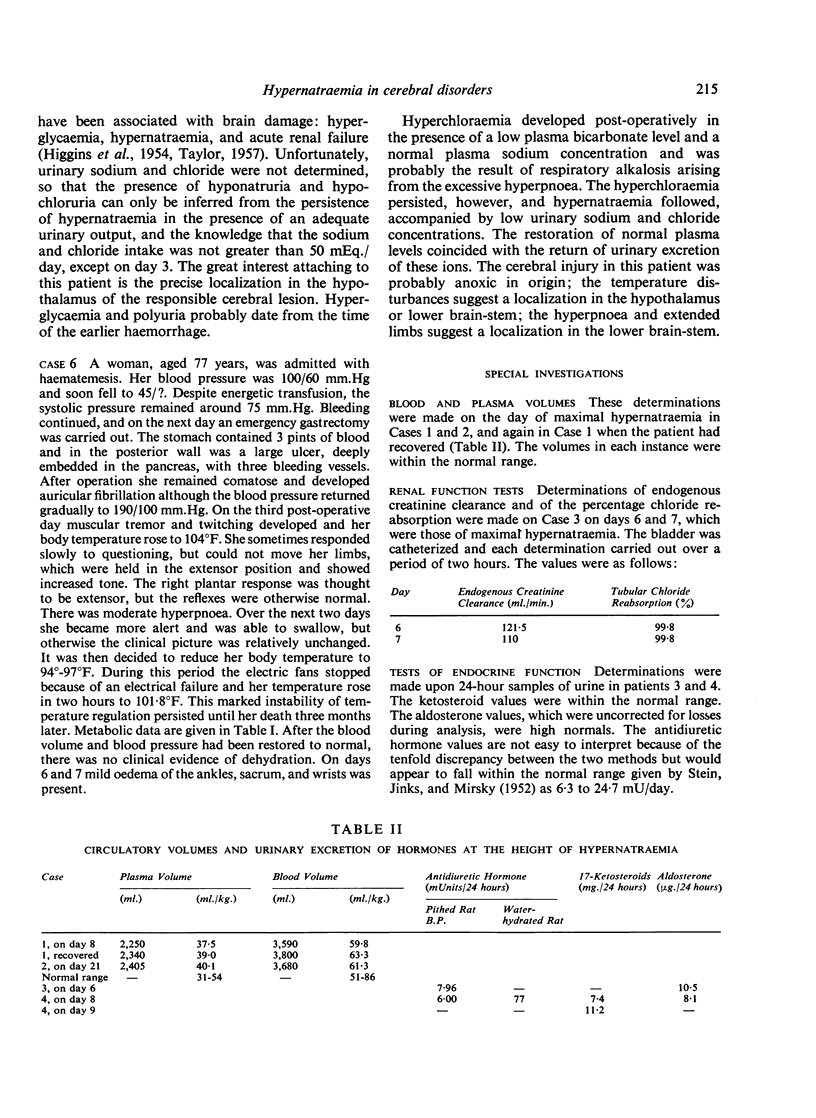
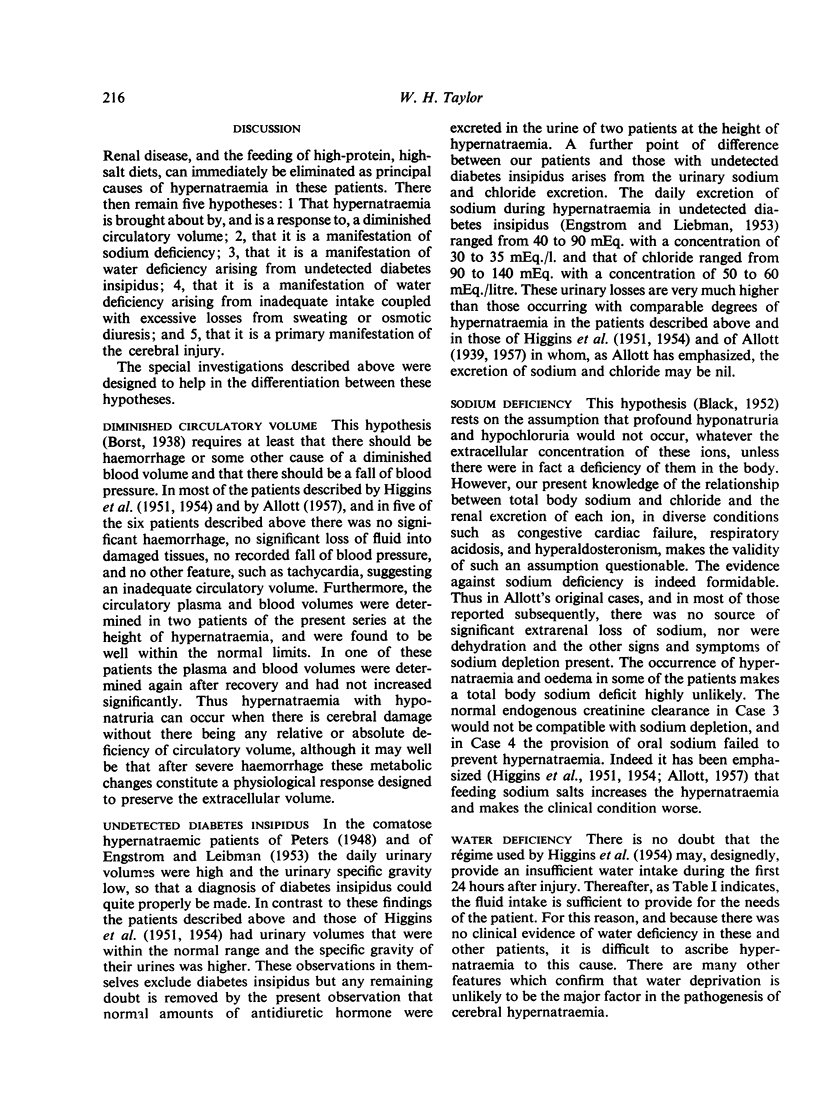
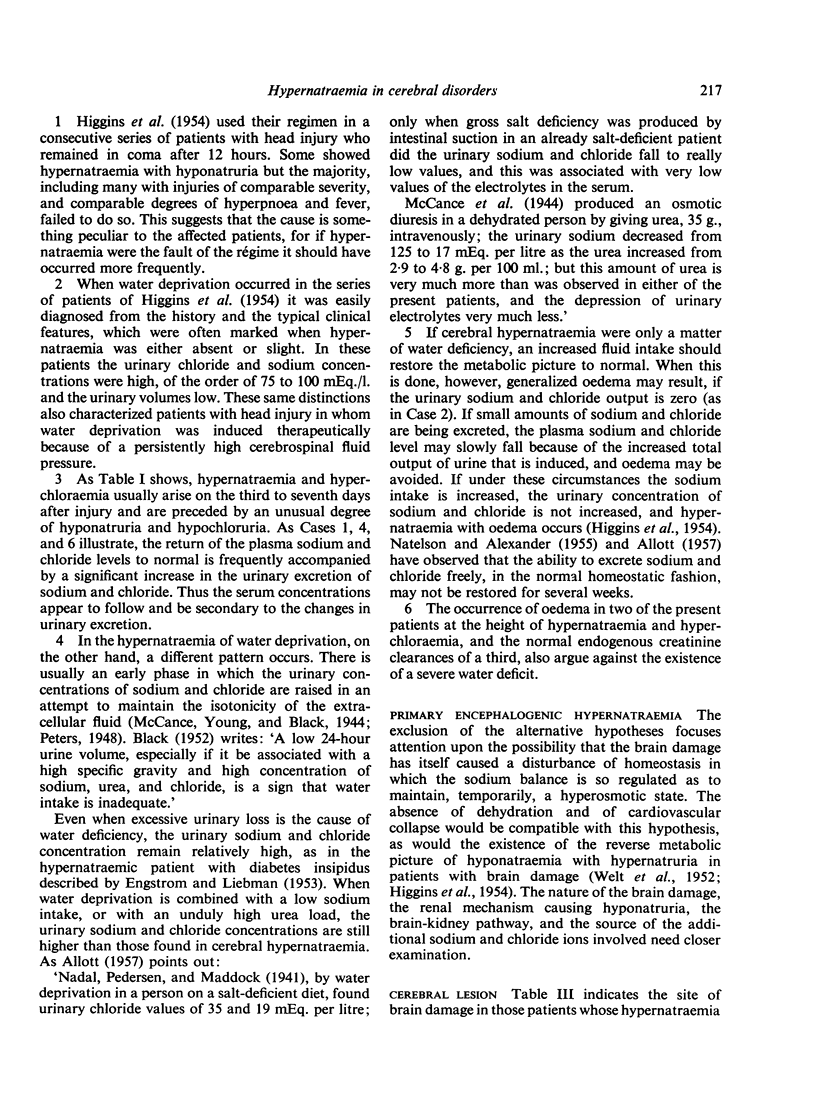
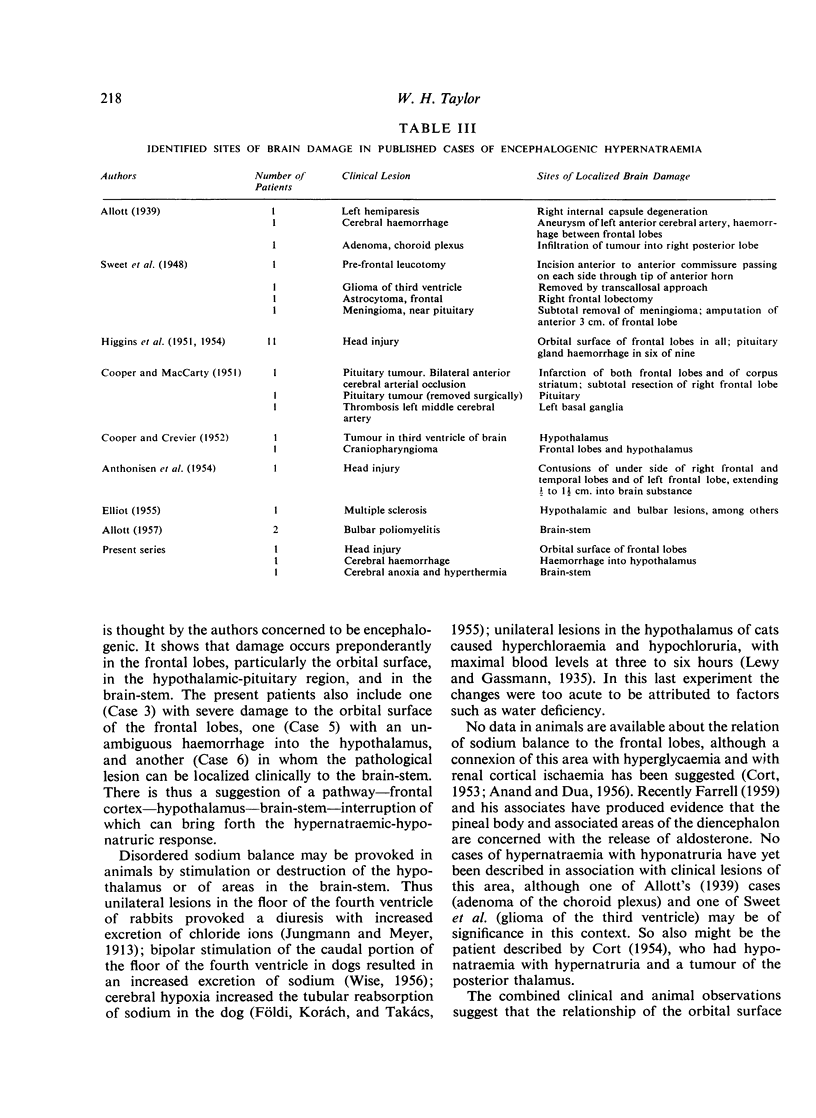
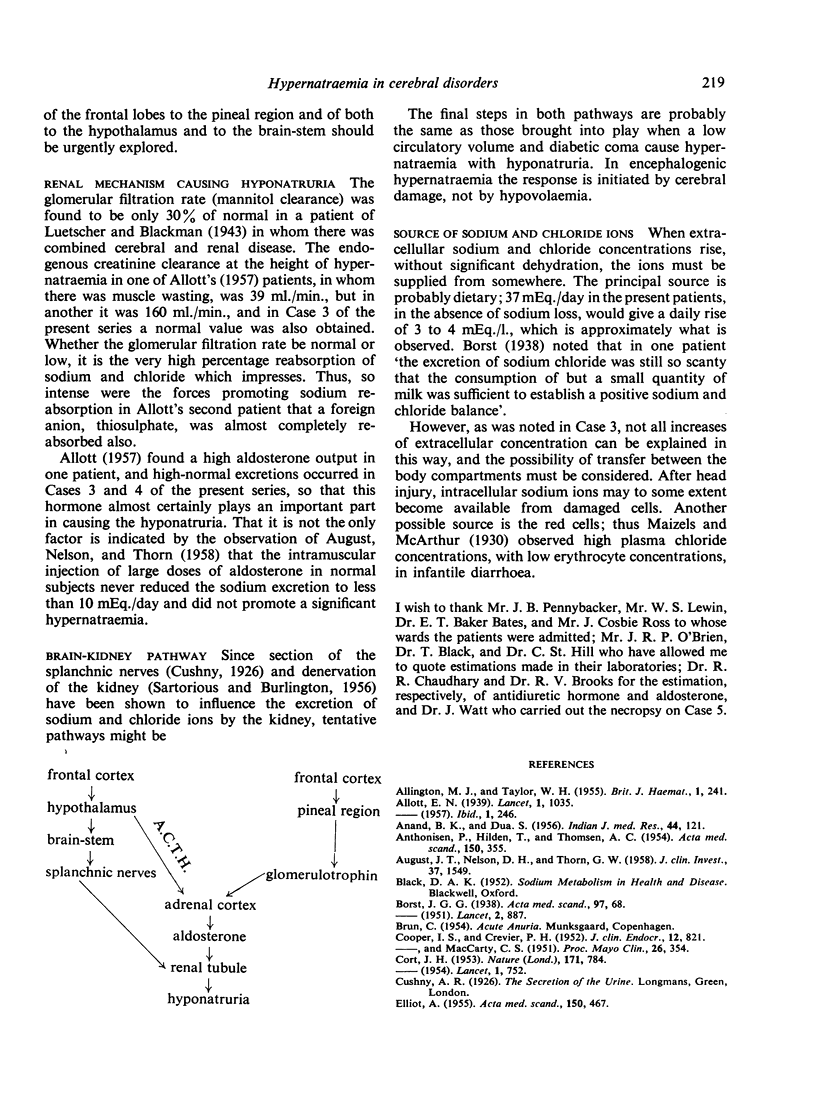
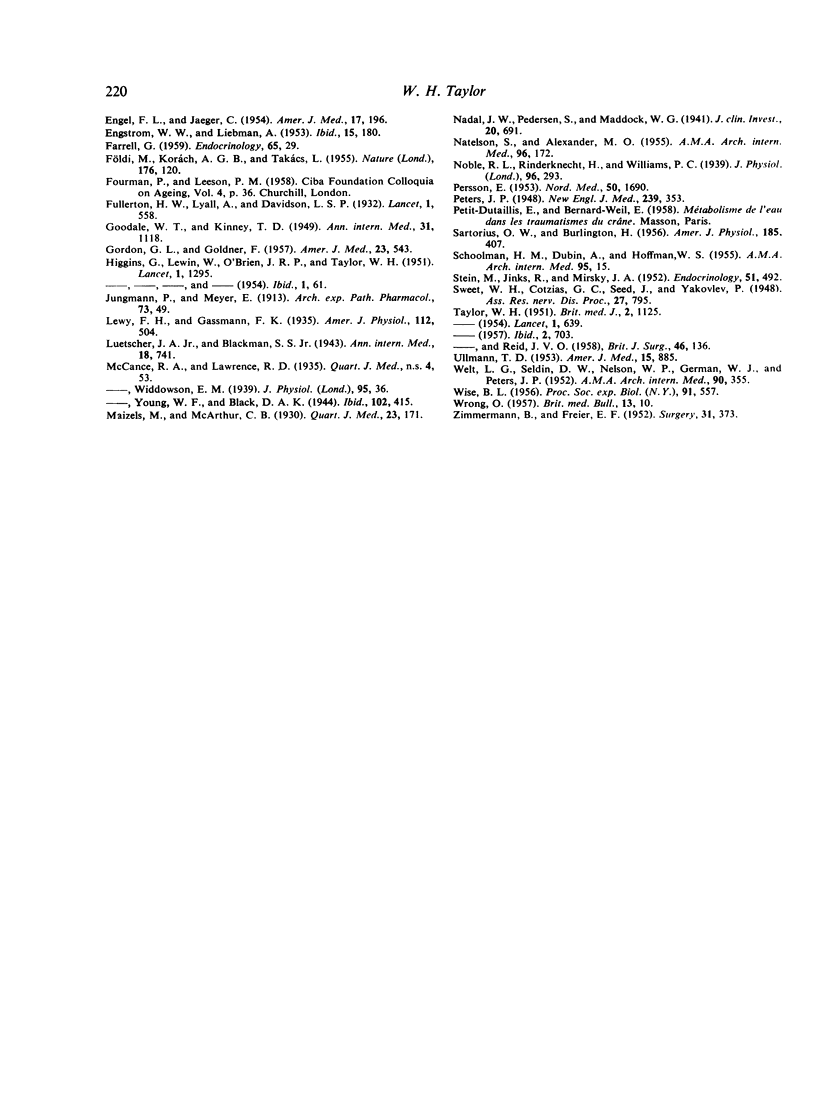
Images in this article
Selected References
These references are in PubMed. This may not be the complete list of references from this article.
- ALLINGTON M. J., TAYLOR W. H. Changes of plasma volume and their effect on the red-cell count during the treatment of pernicious anaemia. Br J Haematol. 1955 Apr;1(2):241–244. doi: 10.1111/j.1365-2141.1955.tb05506.x. [DOI] [PubMed] [Google Scholar]
- ANAND B. K., DUA S. Blood sugar changes induced by electrical stimulation of the limbic system (visceral brain). Indian J Med Res. 1956 Jan;44(1):121–124. [PubMed] [Google Scholar]
- ANTHONISEN P., HILDEN T., THOMSEN A. C. Electrolyte disturbances in cerebral lesions. Acta Med Scand. 1954;150(5):355–367. doi: 10.1111/j.0954-6820.1954.tb18638.x. [DOI] [PubMed] [Google Scholar]
- AUGUST J. T., NELSON D. H., THORN G. W. Response of normal subjects to large amounts of aldosterone. J Clin Invest. 1958 Nov;37(11):1549–1555. doi: 10.1172/JCI103747. [DOI] [PMC free article] [PubMed] [Google Scholar]
- COOPER I. S., CREVIER P. H. Neurogenic hypernatremia and hyperchloremia. J Clin Endocrinol Metab. 1952 Jul;12(7):821–830. doi: 10.1210/jcem-12-7-821. [DOI] [PubMed] [Google Scholar]
- COOPER I. S., MacCARTY C. S. Unusual electrolyte abnormalities associated with cerebral lesions. Proc Staff Meet Mayo Clin. 1951 Sep 12;26(19):354–358. [PubMed] [Google Scholar]
- CORT J. H. Effect of nervous stimulation on the arterio-venous oxygen and carbon dioxide differences across the kidney. Nature. 1953 May 2;171(4357):784–785. doi: 10.1038/171784a0. [DOI] [PubMed] [Google Scholar]
- ENGEL F. L., JAEGER C. Dehydration with hypernatremia, hyperchloremia and azotemia complicating nasogastric tube feeding. Am J Med. 1954 Aug;17(2):196–204. doi: 10.1016/0002-9343(54)90257-0. [DOI] [PubMed] [Google Scholar]
- ENGSTROM W. W., LIEBMAN A. Chronic hyperosmolarity of the body fluids with a cerebral lesion causing diabetes insipidus and anterior pituitiary insufficiency. Am J Med. 1953 Aug;15(2):180–186. doi: 10.1016/0002-9343(53)90069-2. [DOI] [PubMed] [Google Scholar]
- FARRELL G. Steroidogenic properties of extracts of beef diencephalon. Endocrinology. 1959 Jul;65(1):29–33. doi: 10.1210/endo-65-1-29. [DOI] [PubMed] [Google Scholar]
- FOLDI M., KOVACH A. G., TAKACS L. Effect of isolated cerebral hypoxia and hypercapnia on sodium excretion. Nature. 1955 Jul 16;176(4472):120–120. doi: 10.1038/176120a0. [DOI] [PubMed] [Google Scholar]
- GOODALE W. T., KINNEY T. D. Sulfadiazine nephrosis with hyperchloraemia and encephalopathy. Ann Intern Med. 1949 Dec;31(6):1118-28, illust. doi: 10.7326/0003-4819-31-6-1118. [DOI] [PubMed] [Google Scholar]
- GORDON G. L., GOLDNER F. Hypernatremia, azotemia and acidosis after cerebral injury. Am J Med. 1957 Oct;23(4):543–553. doi: 10.1016/0002-9343(57)90225-5. [DOI] [PubMed] [Google Scholar]
- HIGGINS G., LEWIN W., O'BRIEN J. R. P., TAYLOR W. H. Metabolic disorders in head injury. Hyperchloraemia and hypochloruria. Lancet. 1951 Jun 16;1(6668):1295–1300. doi: 10.1016/s0140-6736(51)91771-0. [DOI] [PubMed] [Google Scholar]
- McCance R. A., Widdowson E. M. Functional disorganization of the kidney in disease. J Physiol. 1939 Feb 14;95(1):36–44. doi: 10.1113/jphysiol.1939.sp003709. [DOI] [PMC free article] [PubMed] [Google Scholar]
- McCance R. A., Young W. F., Black D. A. The secretion of urine during dehydration and rehydration. J Physiol. 1944 Apr 4;102(4):415–428. doi: 10.1113/jphysiol.1944.sp004047. [DOI] [PMC free article] [PubMed] [Google Scholar]
- NATELSON S., ALEXANDER M. O. Marked hypernatremia and hyperchloremia with damage to the central nervous system. AMA Arch Intern Med. 1955 Aug;96(2):172–175. doi: 10.1001/archinte.1955.00250130046006. [DOI] [PubMed] [Google Scholar]
- Nadal J. W., Pedersen S., Maddock W. G. A COMPARISON BETWEEN DEHYDRATION FROM SALT LOSS AND FROM WATER DEPRIVATION. J Clin Invest. 1941 Nov;20(6):691–703. doi: 10.1172/JCI101262. [DOI] [PMC free article] [PubMed] [Google Scholar]
- Noble R. L., Rinderknecht H., Williams P. C. The apparent augmentation of pituitary antidiuretic action by various retarding substances. J Physiol. 1939 Aug 14;96(3):293–301. doi: 10.1113/jphysiol.1939.sp003777. [DOI] [PMC free article] [PubMed] [Google Scholar]
- SCHOOLMAN H. M., DUBIN A., HOFFMAN W. S. Clinical syndromes associated with hypernatremia. AMA Arch Intern Med. 1955 Jan;95(1):15–23. doi: 10.1001/archinte.1955.00250070031003. [DOI] [PubMed] [Google Scholar]
- STEIN M., JINKS R., MIRSKY I. A. The bioassay of pitressin and antidiuretic substances in blood and urine. Endocrinology. 1952 Dec;51(6):492–503. doi: 10.1210/endo-51-6-492. [DOI] [PubMed] [Google Scholar]
- TAYLOR W. H. Use and interpretation of the Fantus estimation of urinary chloride. Br Med J. 1951 Nov 10;2(4740):1125–1128. doi: 10.1136/bmj.2.4740.1125. [DOI] [PMC free article] [PubMed] [Google Scholar]
- ULLMANN T. D. Hyperosmolarity of the extracellular fluid in encephalitis: with report of a case. Am J Med. 1953 Dec;15(6):885–890. doi: 10.1016/0002-9343(53)90179-x. [DOI] [PubMed] [Google Scholar]
- WELT L. G., SELDIN D. W., NELSON W. P., GERMAN W. J., PETERS J. P. Role of the central nervous system in metabolism of electrolytes and water. AMA Arch Intern Med. 1952 Sep;90(3):355–378. doi: 10.1001/archinte.1952.00240090076007. [DOI] [PubMed] [Google Scholar]
- WISE B. L. Relation of brain stem to renal electrolyte excretion. Proc Soc Exp Biol Med. 1956 Apr;91(4):557–560. doi: 10.3181/00379727-91-22326. [DOI] [PubMed] [Google Scholar]
- WRONG O. The volume control of body-fluids. Br Med Bull. 1957 Jan;13(1):10–14. doi: 10.1093/oxfordjournals.bmb.a069561. [DOI] [PubMed] [Google Scholar]
- ZIMMERMAN B., FREIER E. F. The occurrence in surgical patients of severe hypernatremia without exogenous dehydration. Surgery. 1952 Mar;31(3):373–384. [PubMed] [Google Scholar]



